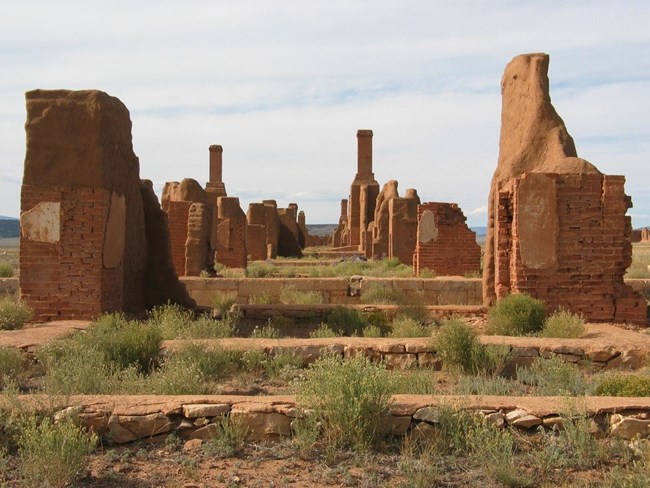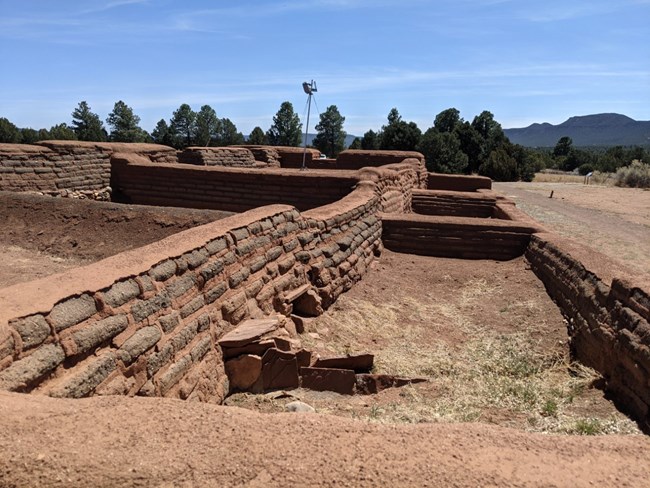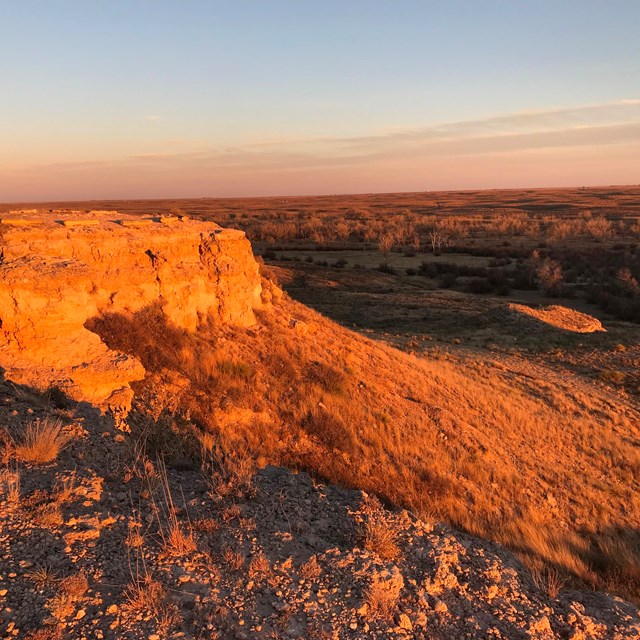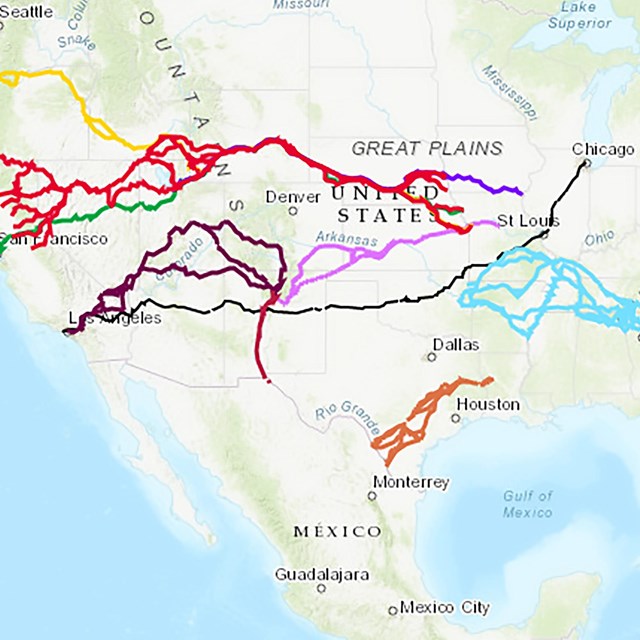Last updated: April 23, 2025
Article
Students Help Preserve Fort Union National Monument on the Santa Fe Trail
Every May we honor the important work of preservationists during what began as Preservation Week in 1973 and expanded to Preservation Month in 2005. One such project is the preservation work completed by University of Pennsylvania students at Fort Union National Monument on the Santa Fe National Historic Trail.

Photo/NPS
Nothing lasts forever, especially not 130-year old adobe. Fort Union National Monument, located east of Las Vegas, New Mexico, near the intersection of the Mountain and Cimarron routes of the Santa Fe Trail, is the site of three military posts built and occupied by the US Army over a 40-year span, beginning in 1851. Encompassing 720 acres, the national monument was home to the largest 19th Century military fort in the region. Since the fort ceased operations in 1891, the adobe walls of the third Fort Union have stood unprotected in the short grass prairie, subject to wind, solar gain, rain, and snow. This exposure to the elements, in addition to shifting baseline climate data, makes the adobe ruins particularly vulnerable to deterioration and creates a unique laboratory to investigate preservation techniques.
Under the leadership of Professor Frank Matero, Chair of the Graduate Program in Historic Preservation and Director of the Center for Architectural Conservation at the University of Pennsylvania, students engaged in preservation projects at Fort Union over five years as part of their coursework. In partnering with Fort Union National Monument, students sought to understand and address the impacts of water and wind on the thousands of square feet of adobe ruins.
First, students compiled information on the history of ruins stabilization at the park, to understand which efforts had worked and which efforts were unsuccessful. Next, they studied weather events, changes in climate, and construction weaknesses that are exacerbated by extremes in weather, using sensors, weather stations, and loggers to collect data on moisture and other deterioration factors. As part of this effort they installed cameras that took one picture every hour. The time lapse photographs revealed how cracks formed and other changes occurred. The researchers also installed sensors within the ruin walls to measure the frequency, extent, and location of moisture, which is an important cause of damage. While moisture is the most significant catalyst for deterioration and catastrophic failure, students adopted a broader, systematic approach to examine a range of potential deterioration mechanisms.

Photo/NPS
After the critical data had been gathered, the team developed a Rapid Assessment Survey (RAS) for the annual in-person survey of the ruins. The survey form was developed in cooperation with the Monument’s preservation crew, who have decades of institutional knowledge of the preservation and maintenance of the fort. The annual survey of ruins, completed from April to October, documents changes in the condition of the ruins, and the results are used in determining risk factors and preservation maintenance needs for the park’s adobe structures, freestanding wall segments, and several individual wall sectors. The RAS helps staff to categorize and prioritize maintenance to be completed over the course of a season.
Known as the Integrated Vulnerability Assessment, the preservation methodology developed at Fort Union National Monument is also being implemented at Pecos National Historical Park and more broadly at National Park Service sites across the Southwest. The work of the University of Pennsylvania student researchers will help preserve nationally significant historic structures for many generations to come.
Nelson, Megan Kate. “Forces of Nature: Adobe Forts of the Southwest.” National Trust for Historic Preservation. Summer 2016. <https://savingplaces.org/stories/forces-of-nature-adobe-forts-of-the-southwest#.YHhNR-hKiUk>.
Raymond, Mikayla. “Field Notes: Fort Union National Monument.” University of Pennsylvania, Weitzman School of Design, Historic Preservation. October 28, 2015. <https://www.design.upenn.edu/historic-preservation/post/fort-union-national-monument>.
“Simple RFID Technology Helps Save Fort Union National Monument from Collapse.” .” University of Pennsylvania, Weitzman School of Design, Historic Preservation. December 9, 2019. <https://www.design.upenn.edu/historic-preservation/post/simple-rfid-technology-helps-save-fort-union-national-monument-collapse>.
Torkelson, Jake. “Field Notes: Penn Preservation Takes on Fort Union 2018.” University of Pennsylvania, Weitzman School of Design, Historic Preservation. March 26, 2018. <https://www.design.upenn.edu/historic-preservation/post/penn-preservation-takes-fort-union-2018>.
Tags
- fort union national monument
- santa fe national historic trail
- santa fe trail
- youth
- partnerships
- students
- national trails
- national historic trails
- historic preservation
- historic preservation education
- historic preservation projects
- fort union national monument
- pecos national historical park
- santa fe national historic trail
- stories


